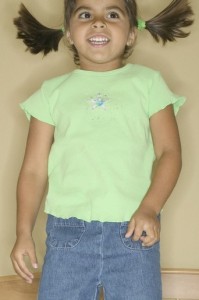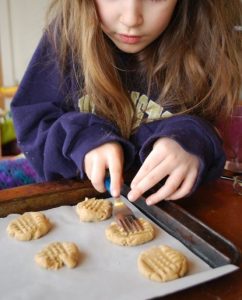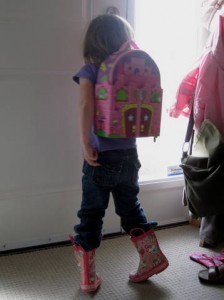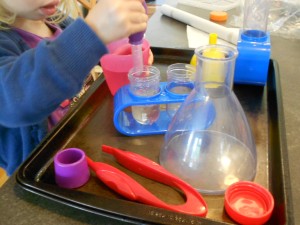Helping young children follow instructions can give them an advantage, or to use an old expression, help them to “steal a march.” (This month’s posts are inspired by the play on words of march and March.) As an adult do you ever find following instructions to be a real challenge? For kids, that can happen often. Including some experience and practice with instructions makes following them much easier.  Very young children respond best to simple, straightforward, one-step instructions. Sometimes, without meaning to, our instructions just confuse kids. When they don’t do as we’ve asked, we think they are not listening, but the problem is with the wording. For instance, telling a child to pick up toys isn’t clear. What happens after picking them up? Does the child just put them down again? Asking kids to clean-up toys isn’t really better. Are we asking them to wash the toys? Are the toys dirty? What we want is for kids to put the toys away. In this case, we need to give instructions that are specific, such as, “Put the books on the shelf,” or, “Put the blocks in the toybox.”
Very young children respond best to simple, straightforward, one-step instructions. Sometimes, without meaning to, our instructions just confuse kids. When they don’t do as we’ve asked, we think they are not listening, but the problem is with the wording. For instance, telling a child to pick up toys isn’t clear. What happens after picking them up? Does the child just put them down again? Asking kids to clean-up toys isn’t really better. Are we asking them to wash the toys? Are the toys dirty? What we want is for kids to put the toys away. In this case, we need to give instructions that are specific, such as, “Put the books on the shelf,” or, “Put the blocks in the toybox.”
With older kids, instructions can have two or three parts, like “Get your library book out of your backpack, and put it on the table.” Kids do better following instructions when they know exactly what to do and there aren’t too many all at once.
 The game “Simon Says” is a fun way to practice listening and instructions at the same time. The leader tells one or more other kids what to do. For example, “Simon says jump 4 times.” As long as the command has the words “Simon says” at the beginning, everyone does that. If the leader doesn’t say “Simon says” then following the instructions means that person is out of the game until the next round. Kids love to have a turn being the leader and telling adults what to do. Instead of “Simon Says,” use other characters and names. “The Monster says” invites big actions while “The Tiny, Little Mouse” suggests very small ones. Occasionally, you can use “Simon ” or “The Monster” to get kids to do things like “Put the toys away in the toy box,” or, “Pick up all the dirty clothes in the bathroom and put them in the hamper.” This can make chores much more fun.
The game “Simon Says” is a fun way to practice listening and instructions at the same time. The leader tells one or more other kids what to do. For example, “Simon says jump 4 times.” As long as the command has the words “Simon says” at the beginning, everyone does that. If the leader doesn’t say “Simon says” then following the instructions means that person is out of the game until the next round. Kids love to have a turn being the leader and telling adults what to do. Instead of “Simon Says,” use other characters and names. “The Monster says” invites big actions while “The Tiny, Little Mouse” suggests very small ones. Occasionally, you can use “Simon ” or “The Monster” to get kids to do things like “Put the toys away in the toy box,” or, “Pick up all the dirty clothes in the bathroom and put them in the hamper.” This can make chores much more fun.
Hokey Pokey is a song that uses instructions, different body parts, and left and right. Many adults need practice with left-hand and right-hand, especially when giving and following directions.
Following a recipe is a super activity for helping kids follow instructions. This can be as simple as making popsicles or pudding or something with more steps such as baking a batch of cookies or loaf of bread. The reward is something great to eat.
Humor can add laughter and playfulness. You can look at your child and give really strange instructions like telling them to put the dirty dishes in the fridge. They think this is hilarious. It also makes them think about instructions and make some decisions for themselves.
Much of time later at school and later still in the workplace will be spent following instructions. Helping young children follow instructions can make life much easier and give them an edge. Can instructions be included in the play-of-the-day?




